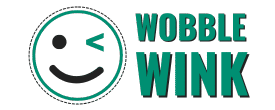What if the secret to the most memorable gift presentations has been sitting in your recycling bin all along? While expensive wrapping papers and elaborate decorations dominate store shelves, savvy gift-givers are discovering that yesterday’s newspapers and forgotten magazines hold untapped potential for creating truly extraordinary presentations. These overlooked materials offer something commercial wrapping simply cannot—character, history, and the kind of authentic charm that makes recipients pause before unwrapping.
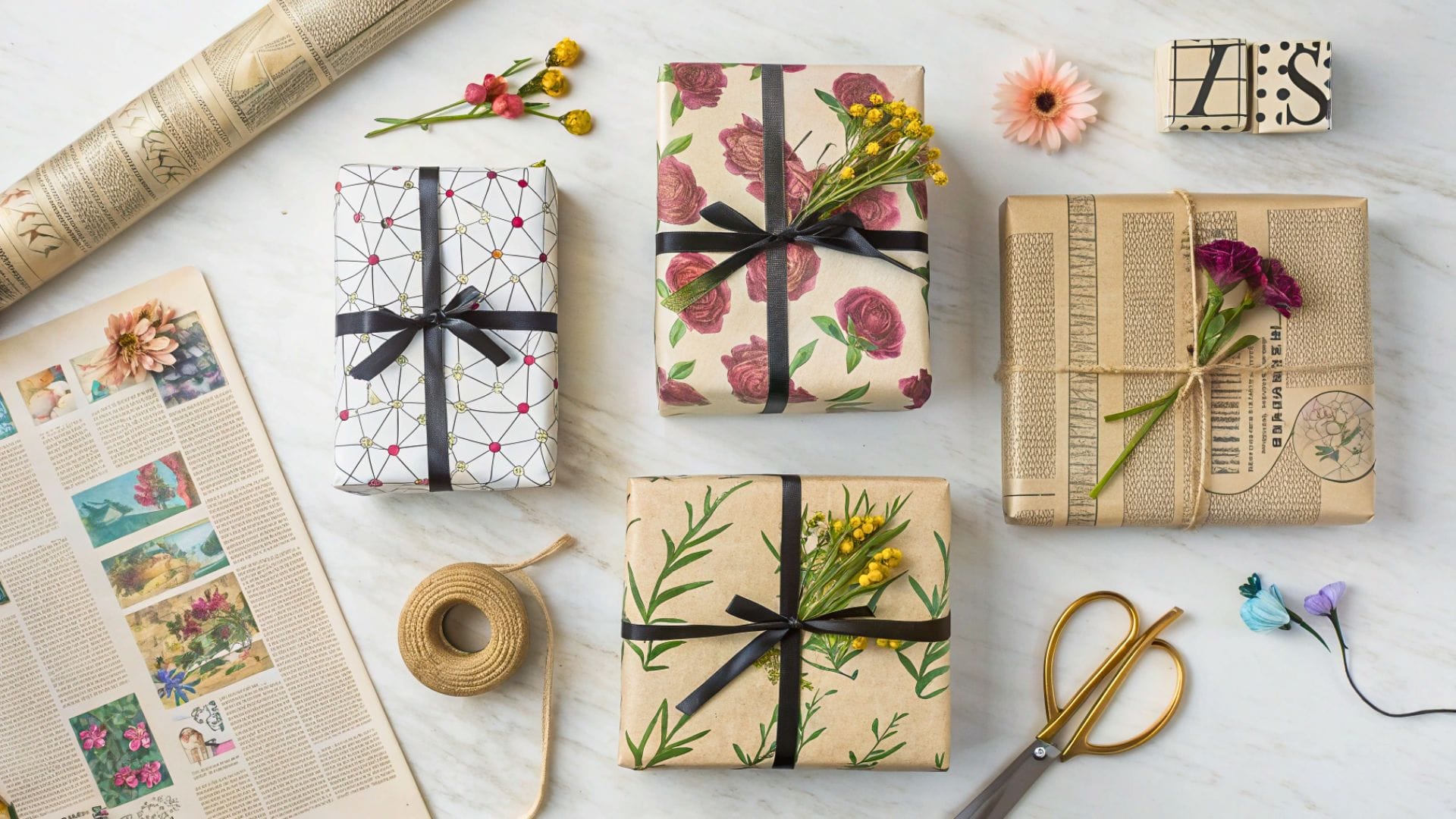
The transformation from discarded reading material to stunning gift wrap isn’t just about sustainability; it’s about reimagining value itself. Each technique we’ll explore turns ordinary printed pages into sophisticated design elements that rival luxury packaging, proving that creativity trumps cost every time. From architectural blueprint illusions to botanical specimen archives, these 13 innovative approaches will revolutionize your gift-giving game while giving new life to materials destined for disposal.

10 Best Tips & Essential Items for Newspaper Gift Wrapping
10 Best Tips (One Line Each)
- Choose newspaper sections that match your recipient’s interests – sports pages for athletes, food sections for cooking enthusiasts.
- Always layer newspapers with translucent materials like vellum or tissue paper to create depth and prevent cheap appearance.
- Age papers using tea staining or coffee washing to transform fresh newsprint into sophisticated vintage-looking material.
- Use double-sided tape and wax seals instead of regular tape to maintain professional, clean adhesion without visible tape lines.
- Create intentional color coordination by selecting newspaper sections with complementary color schemes that match your ribbon and accents.
- Add three-dimensional elements like origami folds or rolled paper roses to elevate flat newspaper into dynamic, sculptural presentations.
- Invest in sharp craft knives and metal rulers for precision cuts that separate amateur from professional-looking geometric patterns.
- Balance large headlines with smaller text blocks when creating collages to avoid competing typography that fights for visual attention.
- Spray finished wrapping with clear acrylic sealer to prevent newspaper ink from transferring to hands and clothing during handling.
- Design deliberate unwrapping stages with hidden messages to make the wrapping itself part of the gift experience, not just packaging.
Essential Items Needed
Basic Tools
- Old newspapers and magazines
- Double-sided tape
- Craft knife
- Metal ruler
- Bone folder
- Cutting mat
- Quality scissors
- Glue sticks
Enhancement Materials
- Translucent papers (vellum, tissue paper)
- Decorative tapes (washi tape, fabric tape)
- Spray adhesive
- Clear acrylic sealer
- Colored pencils
- Metallic markers
3D Design Elements
- Wire or pipe cleaners
- Cotton batting
- Small decorative buttons
- Vintage coins or stamps
- Embossing tools
Advanced Techniques
- Circle cutters
- Templates and stencils
- Small LED lights
- Spray bottles
- Tweezers
- Blending tools
1. The Vintage Cinema Noir Collection
Transform entertainment sections from newspapers into sophisticated gift wrap that channels old Hollywood glamour. The secret lies in strategic layering—use movie reviews, theater listings, and film advertisements as your base, then add translucent vellum overlays that create depth while maintaining readability. What makes this extraordinary is the intentional “spotlight effect” created by cutting circular windows in the outer layer, revealing dramatic headlines underneath like “OSCAR WINNER” or “BLOCKBUSTER HIT.”
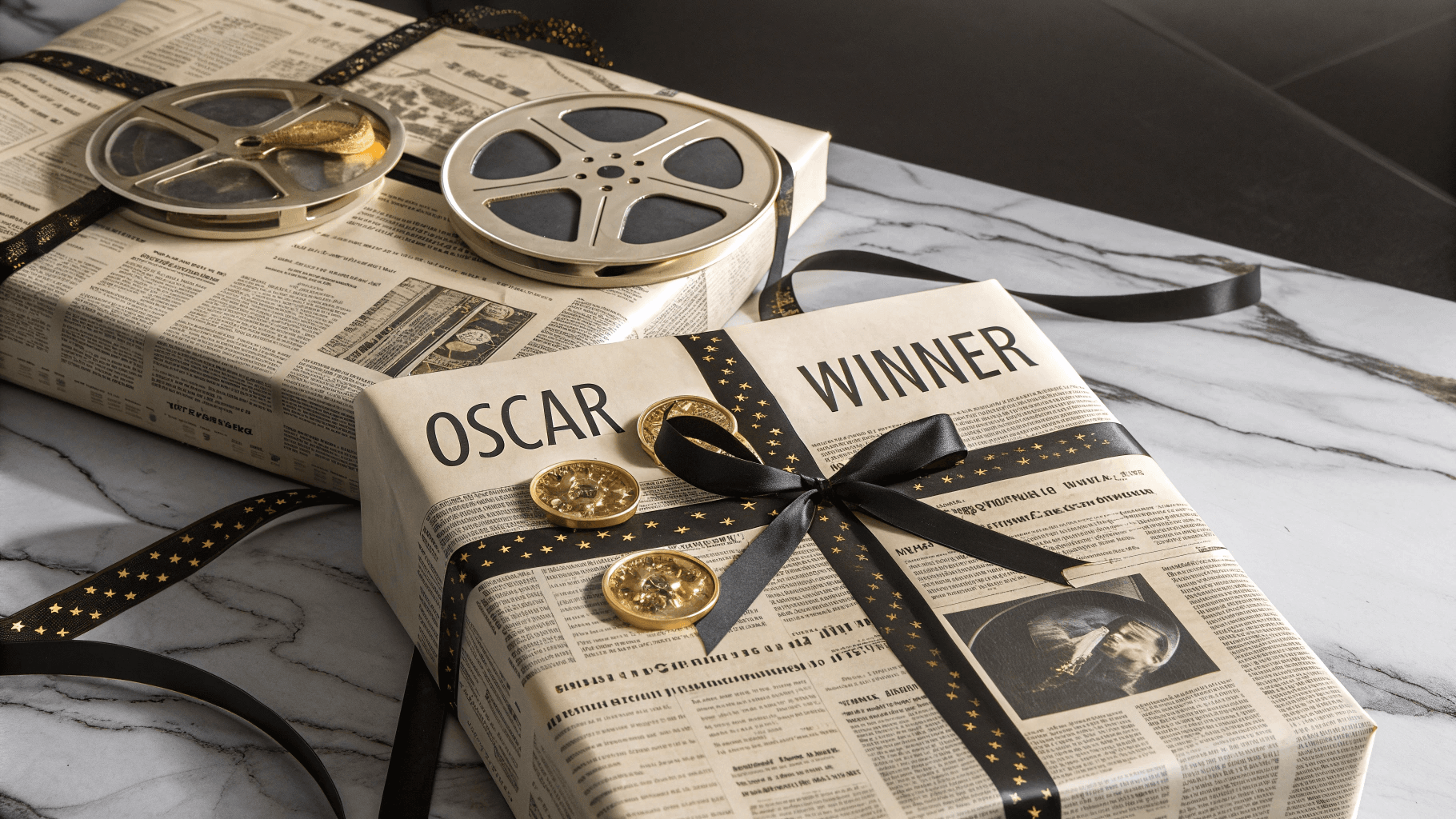
The psychological impact works because our brains are wired to find incomplete information intriguing—those peek-through windows create curiosity gaps that make recipients want to explore further. Add metallic gold wax seals positioned strategically over the most compelling headlines, and finish with narrow black satin ribbon that mimics film strips.
2. Botanical Specimen Archive
Here’s where science meets artistry in unexpected ways. Magazine pages featuring botanical illustrations, gardening sections, or nature photography become the foundation for gift wrapping that mimics museum specimen collections. The breakthrough technique involves creating “classification labels” using torn strips of contrasting magazine pages—perhaps fashion magazines for their clean typography—and adhering them like scientific specimen tags.
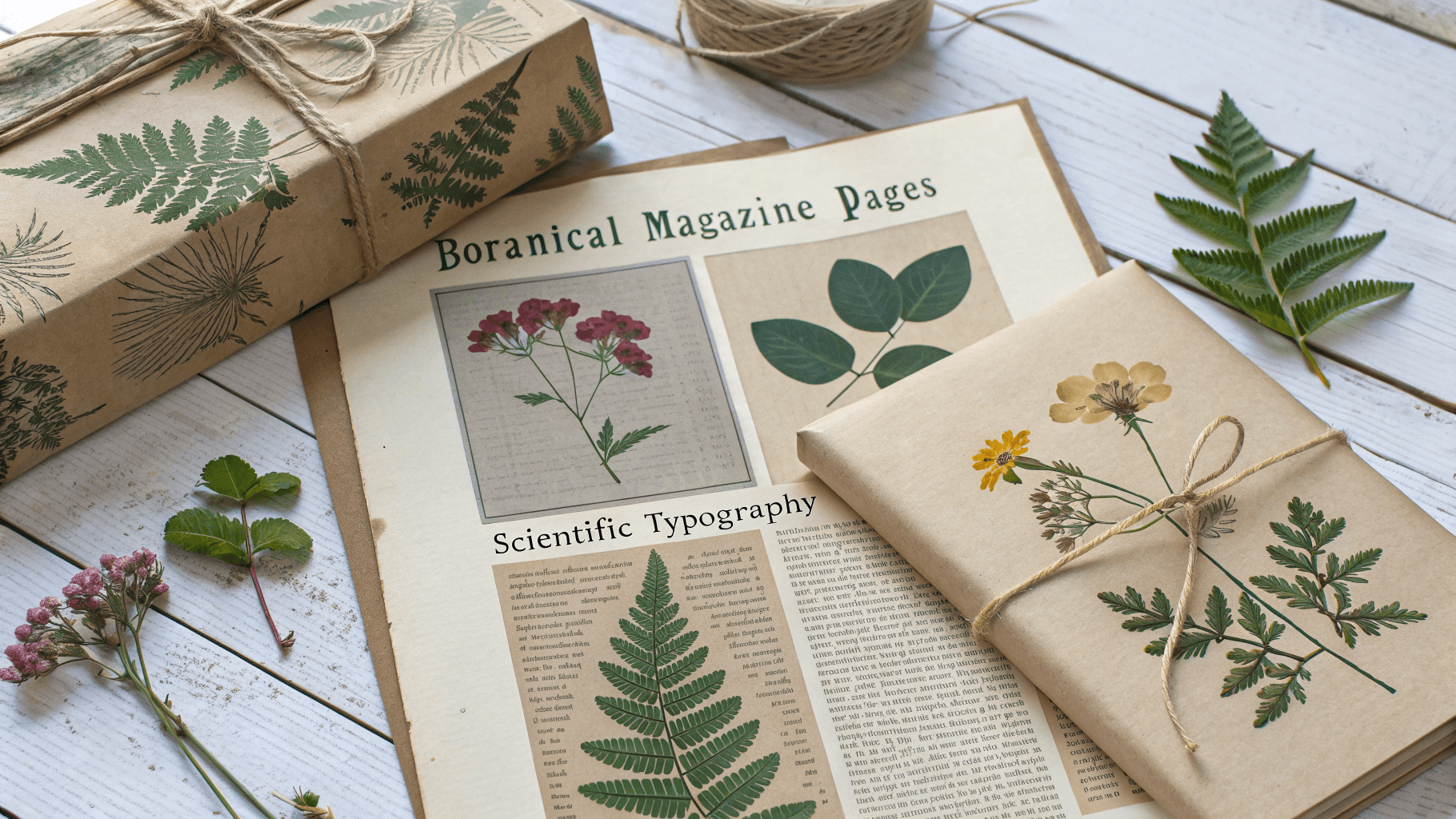
What elevates this beyond typical eco-wrapping is the addition of actual pressed flowers or leaves (from your yard or store-bought) positioned precisely over corresponding images in the magazines. This creates a three-dimensional specimen effect that makes recipients feel like they’re unwrapping a rare botanical discovery. The tactile contrast between flat printed images and real organic materials triggers multiple senses simultaneously.
3. Typographic Explosion Cube
Magazine headlines become three-dimensional architectural elements in this avant-garde approach. Instead of flat wrapping, create geometric paper sculptures by cutting bold headlines and arranging them in layered, perpendicular installations around the gift box. Think of it as turning words into building blocks—each headline strip is folded, curved, or twisted to create shadows and depth.
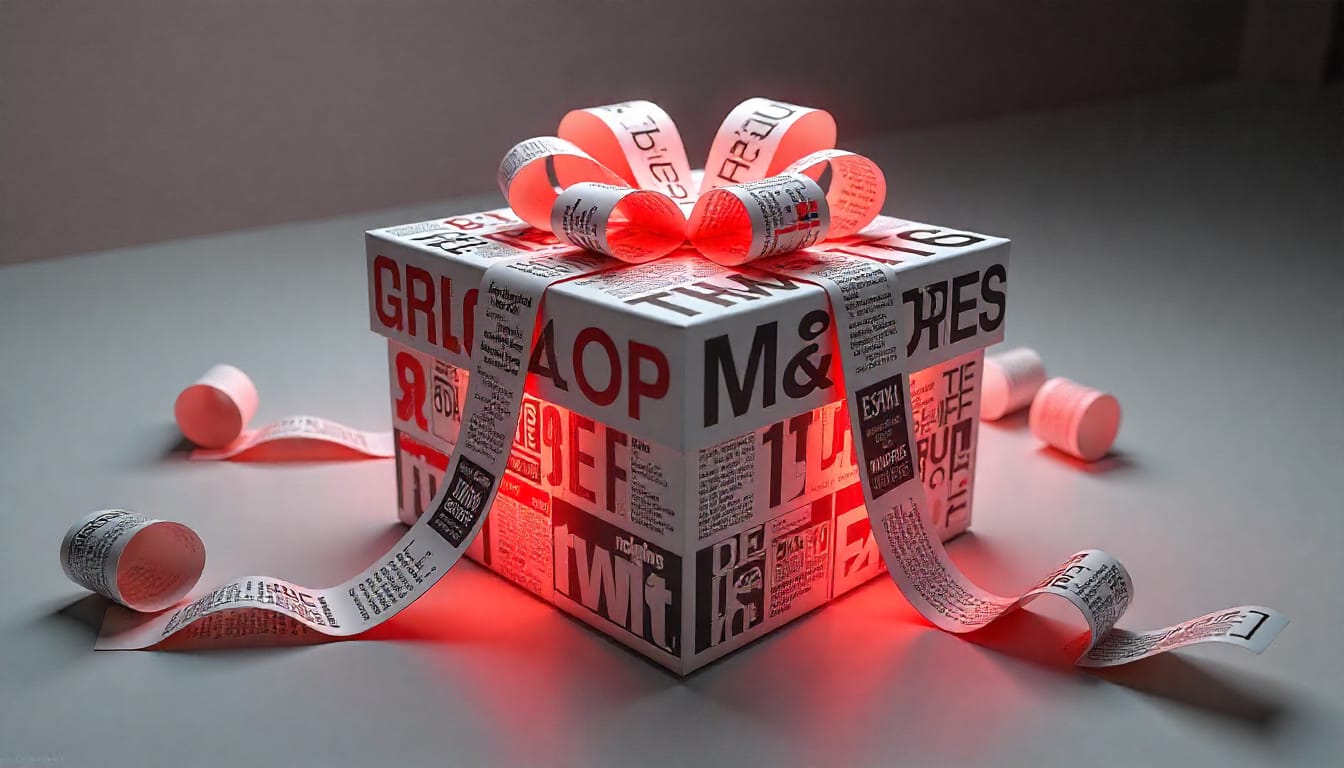
The psychological hook here taps into our fascination with organized chaos. The human eye loves finding patterns in seemingly random arrangements, and this design satisfies that craving while creating genuine surprise. Use magazines from different industries—tech, fashion, sports, cooking—to create color and font variety. The final touch involves backlighting the sculpture with battery-operated LED strips hidden within the layers, making certain words glow dramatically.
4. Culinary Cartography Adventure
Food magazines transform into edible treasure maps through this ingenious technique. The innovation lies in treating recipe pages like ancient cartographic documents—tea-stain them for aging, then use food-safe gold leaf to highlight specific ingredients mentioned in the recipes as if they were precious territories on explorer maps.

What makes this intellectually satisfying is the layered storytelling. Recipients first see what appears to be aged cooking manuscripts, then discover the gold-highlighted ingredients create a “flavor journey” that hints at the gift inside. If it’s kitchen-related, highlight baking ingredients; for wine gifts, emphasize grape varieties. The multisensory experience includes the visual treasure hunt, the tactile feel of genuine parchment-like aging, and the aromatic hint of tea staining.
5. Kaleidoscope Geometric Fusion
Fashion magazines become mathematical art through precision geometric cutting and reassembly. The technique involves creating perfect triangular, hexagonal, and diamond shapes from high-contrast fashion photos, then reassembling them in kaleidoscope patterns that wrap seamlessly around cylindrical gifts or create stunning flat presentations for books.

The neurological appeal stems from our brain’s hardwired appreciation for symmetry and pattern recognition. When fashion imagery—already designed to be visually appealing—is reorganized into geometric perfection, it creates a hypnotic effect that’s impossible to look away from. The secret enhancement involves using iridescent tape along the geometric seam lines, creating rainbow reflections that shift as the package is moved.
6. Archaeological Artifact Revelation
Newspaper comics sections become ancient archaeological wrappings through strategic weathering and layering techniques. The breakthrough method involves creating the illusion that the gift is a recently discovered artifact by using comic strips as “bandage wrappings” around the box, similar to Egyptian mummy preservation.
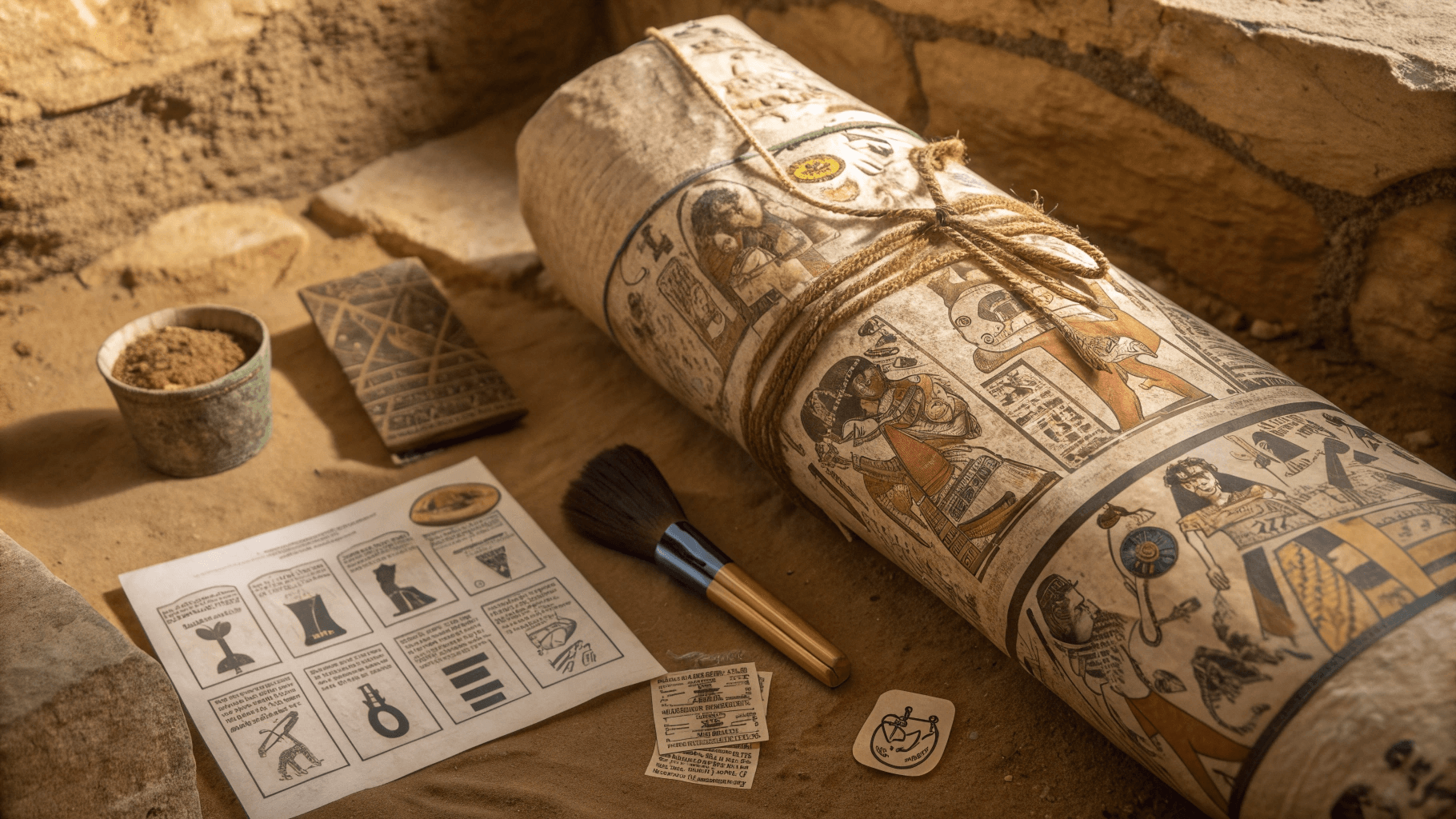
The psychological impact leverages our fascination with discovery and hidden treasures. Each comic strip layer tells part of a story, creating anticipation as recipients carefully unwrap each “archaeological layer.” The weathering technique involves coffee staining, careful edge burning (safely), and dusting with cocoa powder for that authentic excavation feel. Add small “artifact tags” with handwritten “discovery notes” in multiple languages for academic authenticity.
7. Sustainable Luxury Origami Forest
Transform magazine pages into intricate origami trees, flowers, and wildlife that completely obscure the actual gift beneath a paper ecosystem. The innovation is in scale and complexity—instead of simple origami shapes, create an entire miniature world where the gift becomes the “ground” supporting a delicate paper forest.

This design triggers our instinct to protect and preserve beautiful things, making the unwrapping process feel almost destructive (in the best way). The recipient experiences genuine conflict between wanting to access the gift and preserving the artwork. Use nature magazines for realistic coloring, and vary the paper thickness by layering different magazine types to create depth and structural integrity in the sculptures.
8. Neon Pop Art Explosion
Magazine advertisements become high-energy pop art through strategic neon highlighting and layering. The technique involves cutting advertisement elements into puzzle-piece shapes, then reassembling them with intentional misalignments while adding neon-colored tape strips that create electric circuit-board patterns across the surface.
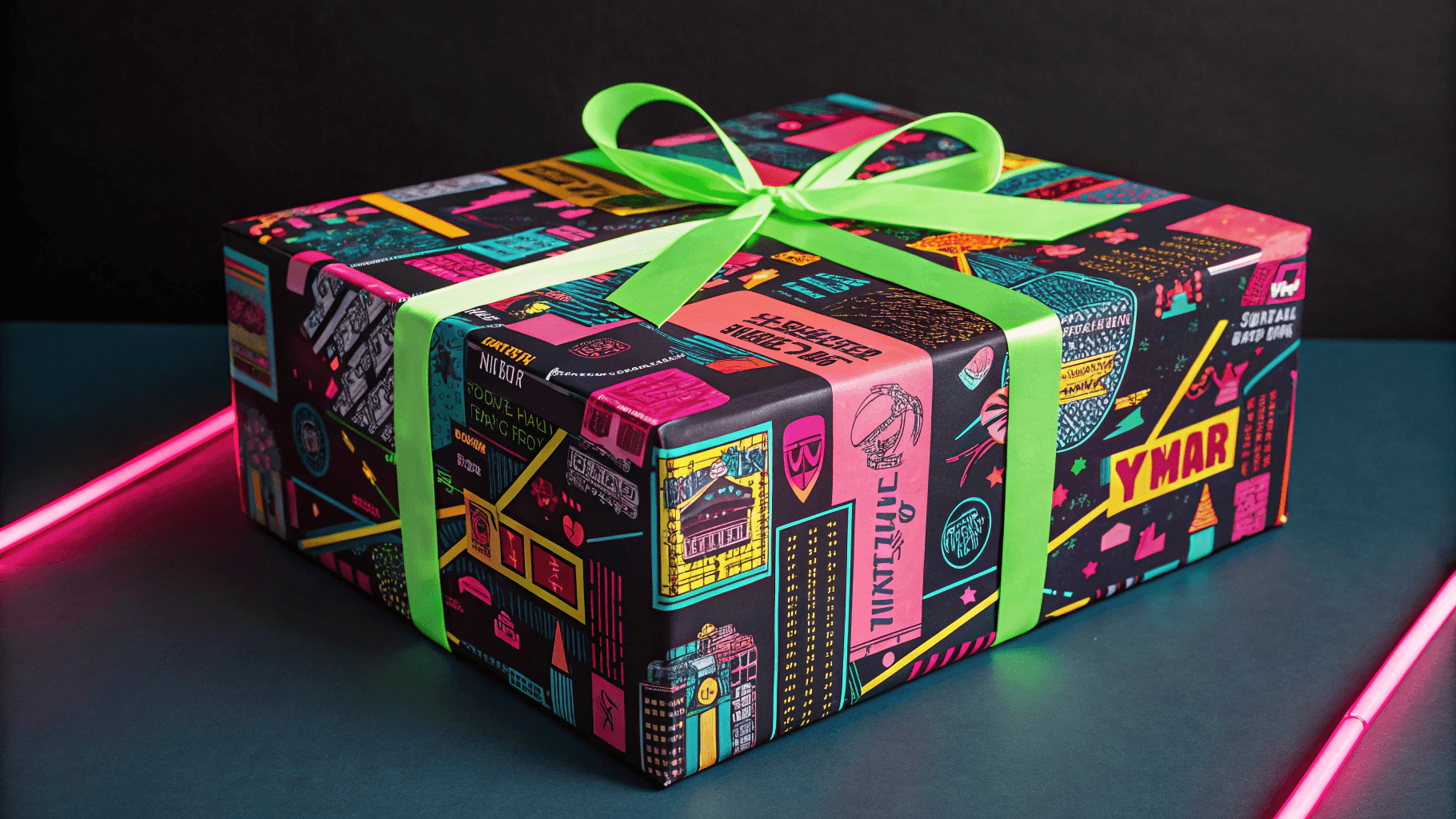
The sensory overload is intentional and exhilarating—it mimics the visual chaos of Times Square or Tokyo’s neon districts. What makes it sophisticated is the underlying geometric structure that brings order to the apparent chaos. The neon tape isn’t random; it follows mathematical grid patterns that create subliminal harmony. Under blacklight (include a small UV flashlight as part of the gift presentation), hidden messages or images become visible through strategic neon placement.
9. Literary Time Capsule Journey
Newspaper book reviews and literary sections become historical document presentations through archival-quality preservation techniques. Each gift is wrapped in chronologically arranged book reviews, creating a literary timeline that spans decades. The innovation lies in creating “reading journey maps” where colored thread connects related reviews, authors, or genres across different time periods.
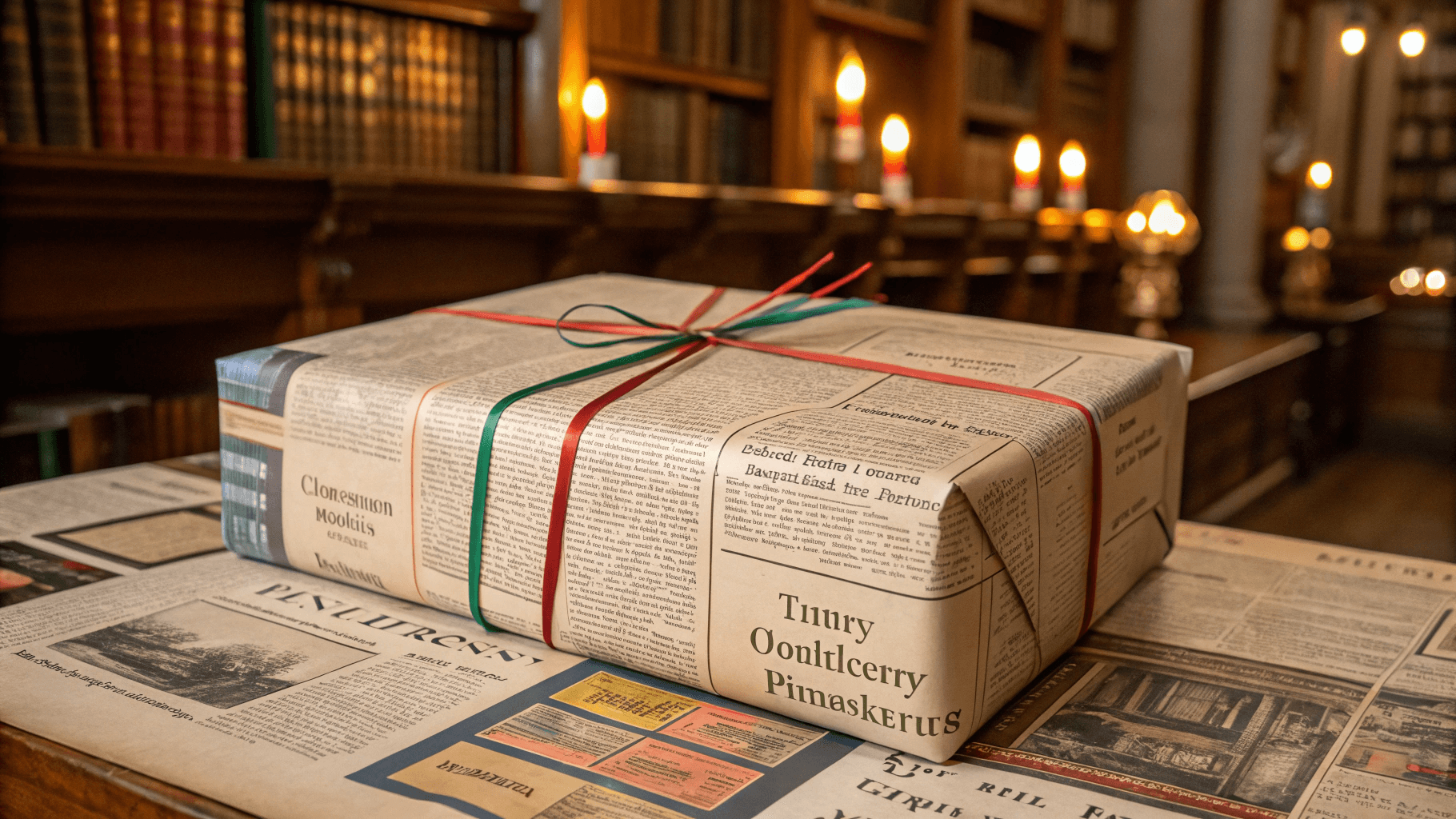
The intellectual engagement comes from the recipient discovering literary connections they never noticed—how science fiction evolved, which authors influenced each other, or how book trends changed over decades. Include small vintage library checkout cards as gift tags, complete with due dates and fake stamped returns, making the recipient feel like they’re checking out a piece of literary history.
10. Architectural Blueprint Illusion
Technical magazine pages (architecture, engineering, design) become professional blueprint presentations through strategic blue tinting and technical annotation additions. The gift appears to be architectural plans for whatever’s inside—if it’s a kitchen gadget, create “blueprints” showing technical specifications using the magazine’s existing diagrams as foundation.
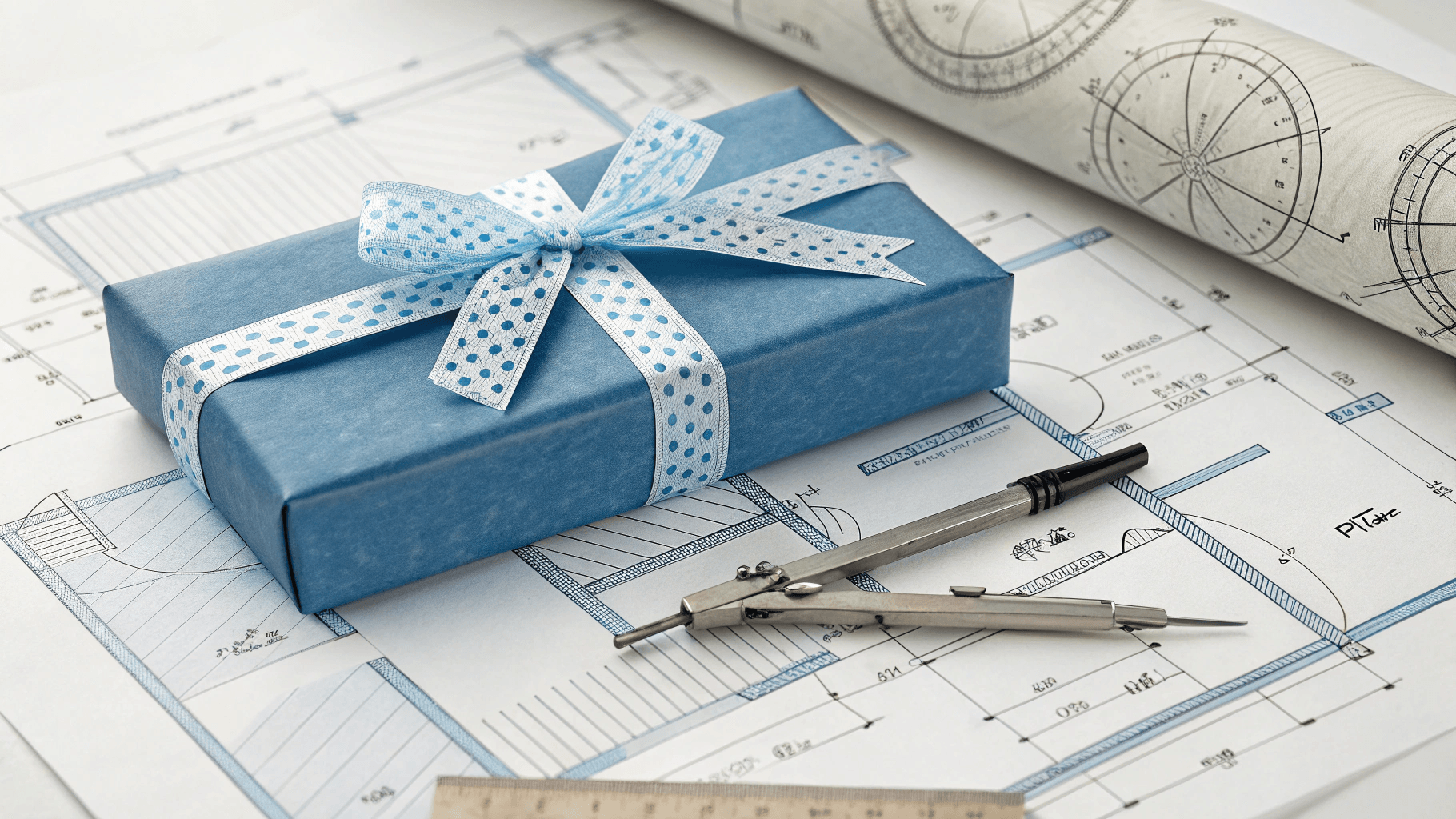
The psychological satisfaction comes from feeling like you’re accessing professional, insider information. People are naturally curious about “how things work,” and this presentation satisfies that curiosity while creating anticipation. Add authentic touches like architect’s scales, drafting tools as decorative elements, and hand-drawn “revision notes” in technical pencil. The unwrapping process feels like reviewing final construction plans before building begins.
11. Weather Pattern Phenomenon
Weather sections from newspapers become meteorological art installations through layered transparency techniques and strategic lighting. Create “storm systems” by cutting spiral patterns from weather maps, then layering them with varying opacity to show weather front movements. The gift sits at the “eye of the storm” in this meteorological presentation.
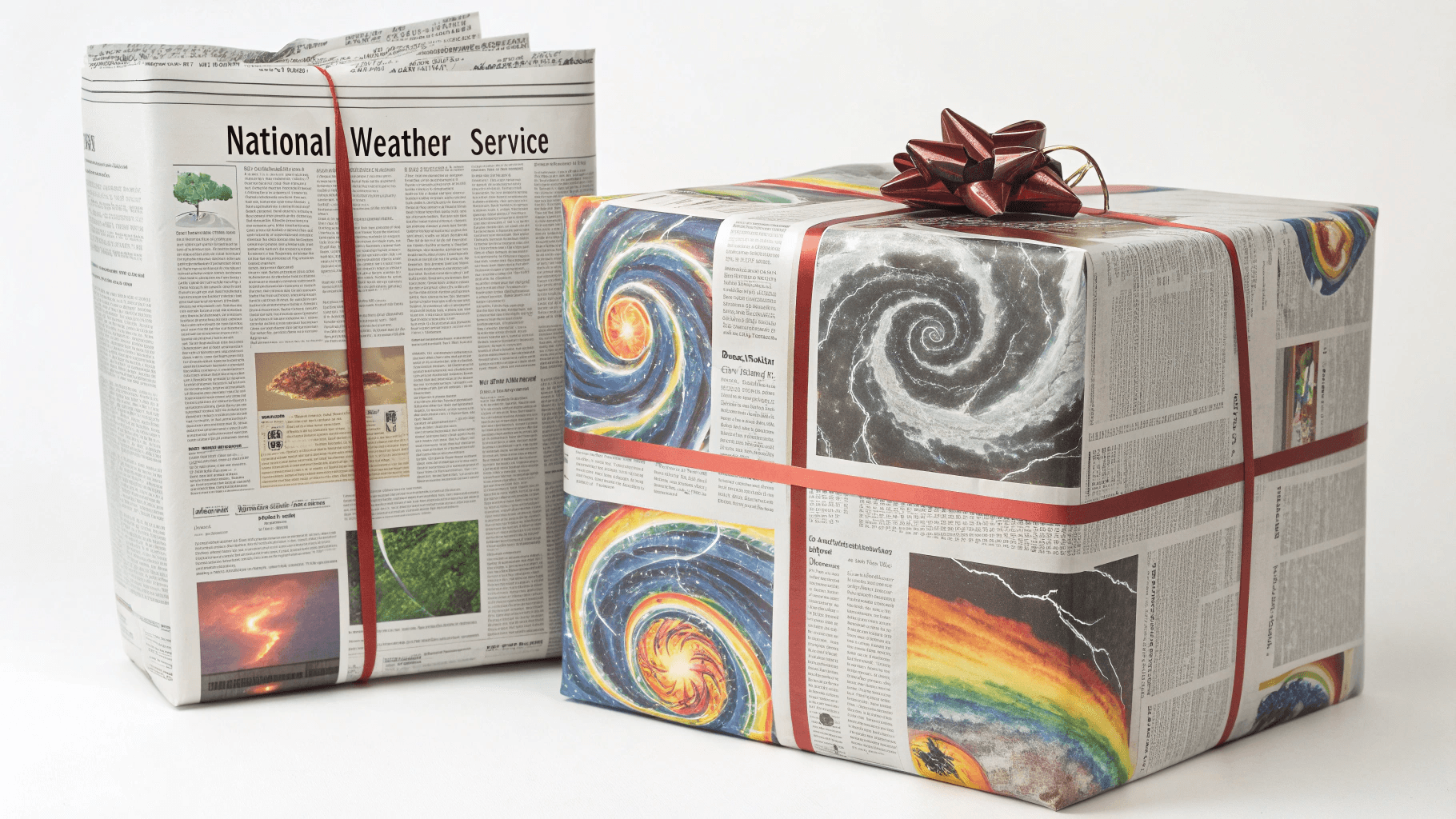
The unique appeal comes from transforming mundane weather reports into dynamic, almost alive-looking systems. Add cotton batting for cloud textures, and use blue and silver spray mist (carefully applied) to create humidity effects. The scientific accuracy combined with artistic interpretation creates educational entertainment—recipients learn about weather patterns while experiencing visual beauty. Include a vintage barometer or weather instruments as presentation props.
12. Financial Market Abstract Art
Stock market pages become sophisticated abstract expressionist art through strategic highlighting and geometric overlay patterns. The innovation involves treating financial charts and numbers as pure design elements, creating surprisingly beautiful patterns through mathematical visualization. Currency symbols become decorative motifs, and stock charts transform into abstract landscape drawings.
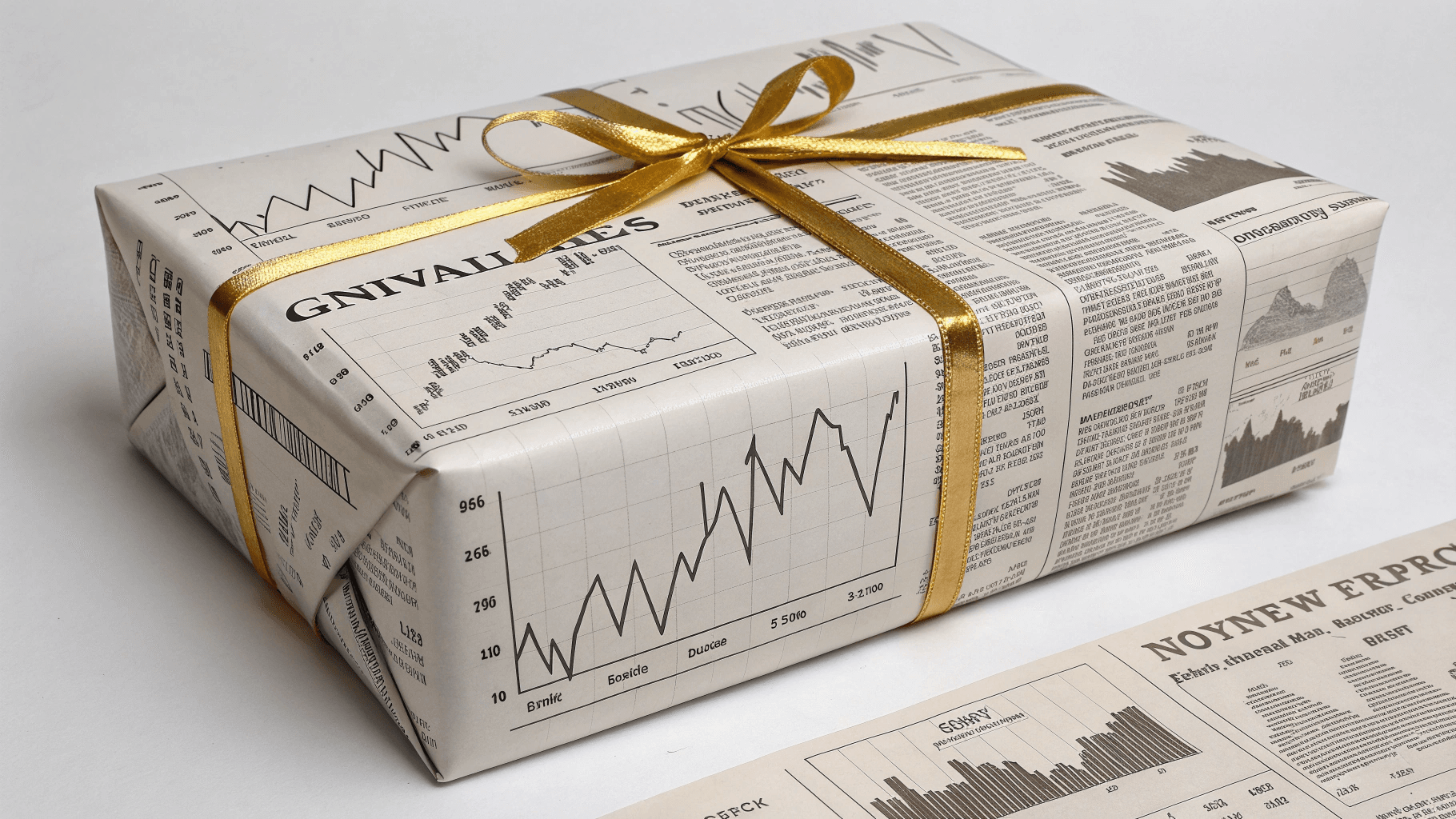
The intellectual intrigue comes from finding beauty in the seemingly mundane world of finance. This appeals to our pattern-seeking nature while creating conversations about value, investment, and the hidden aesthetics in everyday information. Use metallic markers to trace significant trend lines, creating literal “golden opportunities” throughout the design. Add vintage coins or bills from different countries as three-dimensional accent elements.
13. Cultural Fusion Celebration
International newspaper and magazine sections from different cultures create a global celebration presentation through strategic translation and cultural symbol integration. The technique involves layering text in multiple languages, with small translation cards that help recipients understand different cultural perspectives on celebration, gift-giving, and joy.
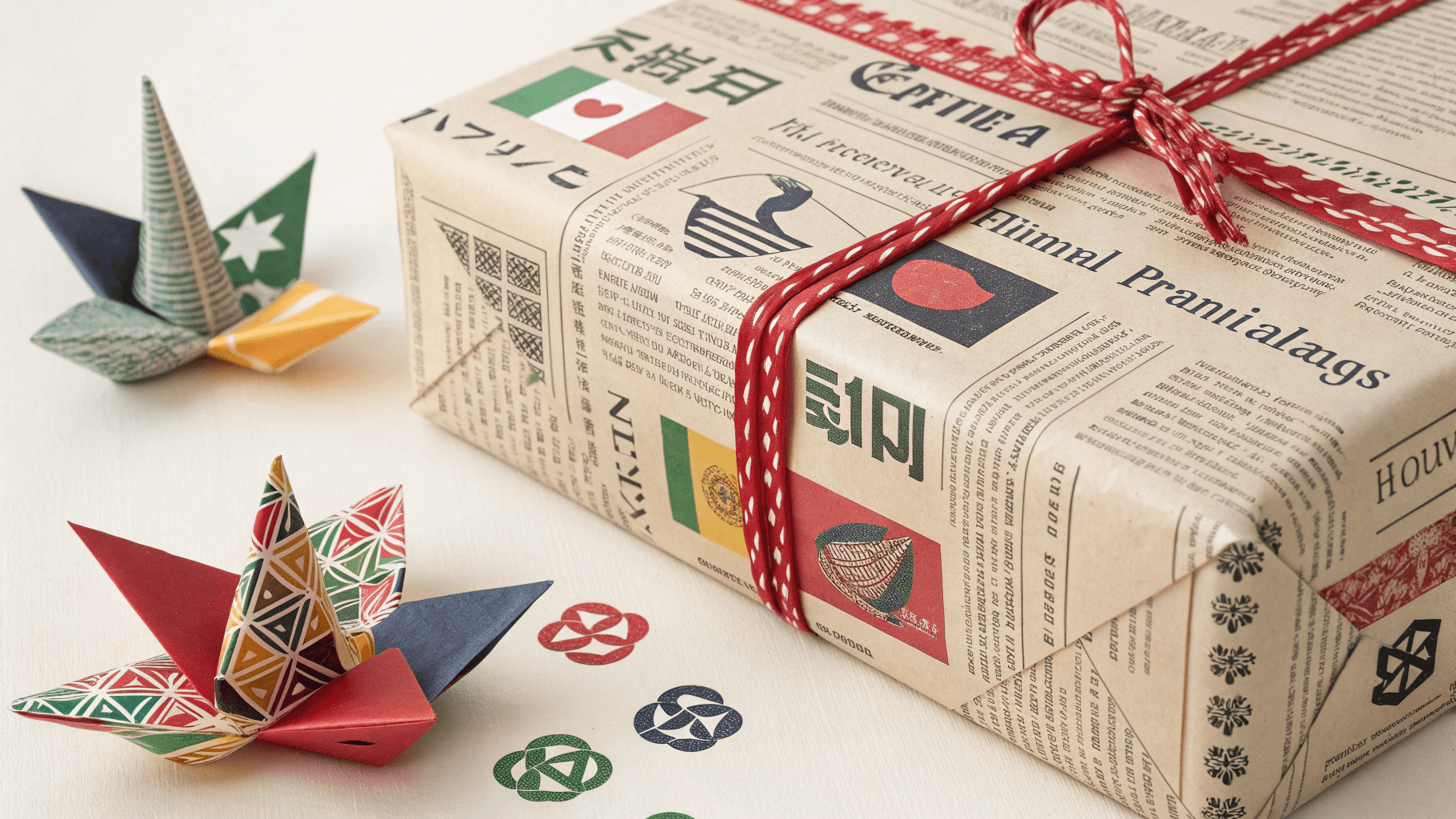
The profound impact comes from creating genuine cross-cultural connection and learning. This isn’t just decoration—it’s cultural education wrapped around a gift. Include small cultural artifacts like origami cranes (Japanese), papel picado techniques (Mexican), or Celtic knot patterns (Irish) created from the appropriate cultural magazine sections. The unwrapping becomes a world tour of celebration traditions.
Final Thought,
These 13 transformative wrapping ideas prove that the most extraordinary gifts often come disguised in the most ordinary materials. By reimagining discarded newspapers and magazines as premium design elements, we’re not just creating beautiful presentations—we’re participating in a quiet revolution that values creativity over consumption. Each technique challenges our perceptions of worth and beauty, demonstrating that luxury lies not in expensive materials but in thoughtful intention and artistic vision. The psychological impact on recipients extends far beyond the initial unwrapping moment; these designs create lasting memories and spark conversations about sustainability, creativity, and the hidden potential in everyday objects.
What makes these approaches truly remarkable is how they transform the gift-giving experience from a simple exchange into a multisensory journey of discovery, education, and artistic appreciation. Whether you choose the sophisticated elegance of the Cinema Noir collection or the whimsical complexity of an Origami Forest, you’re offering something far more valuable than traditional wrapping paper—you’re gifting an experience, a story, and a gentle reminder that the most beautiful things in life often come from seeing ordinary materials through extraordinary eyes.
In a world increasingly conscious of waste and environmental impact, these techniques offer a perfect synthesis of sustainability and style, proving that eco-conscious choices can be the most luxurious ones of all. The next time you reach for expensive wrapping supplies, remember that yesterday’s news can become tomorrow’s treasured memory with nothing more than imagination, intention, and a willingness to see beauty where others see waste.
